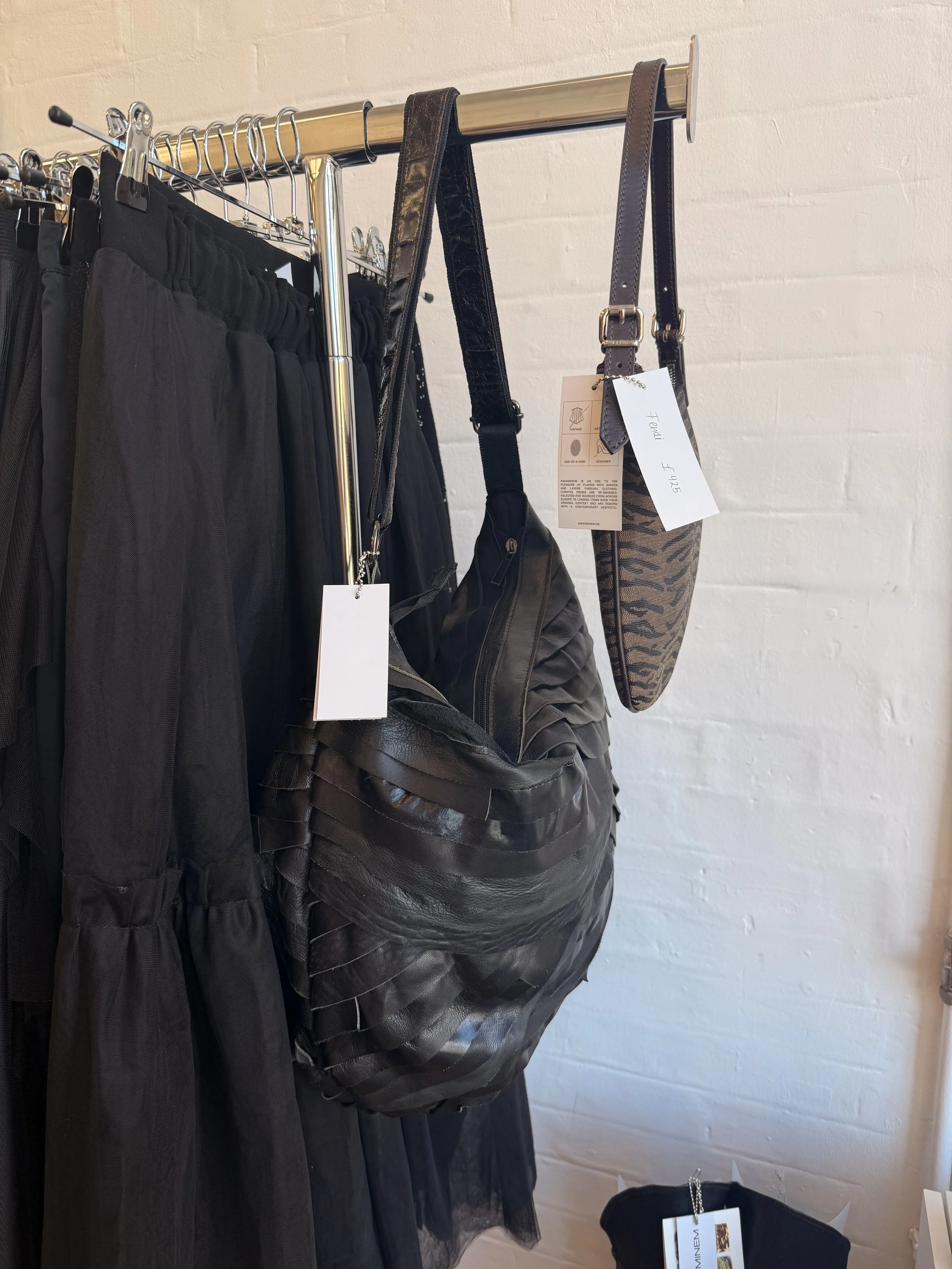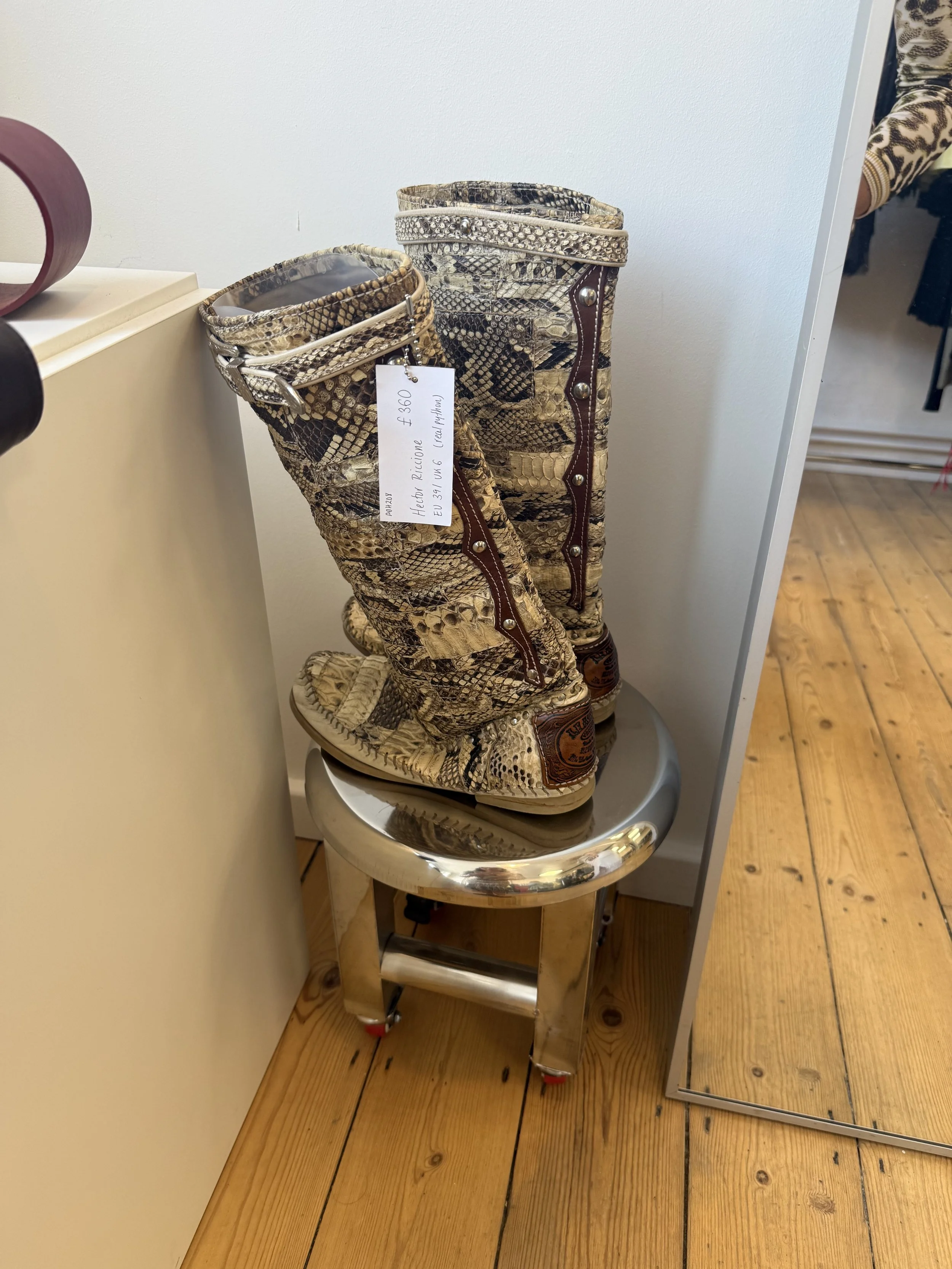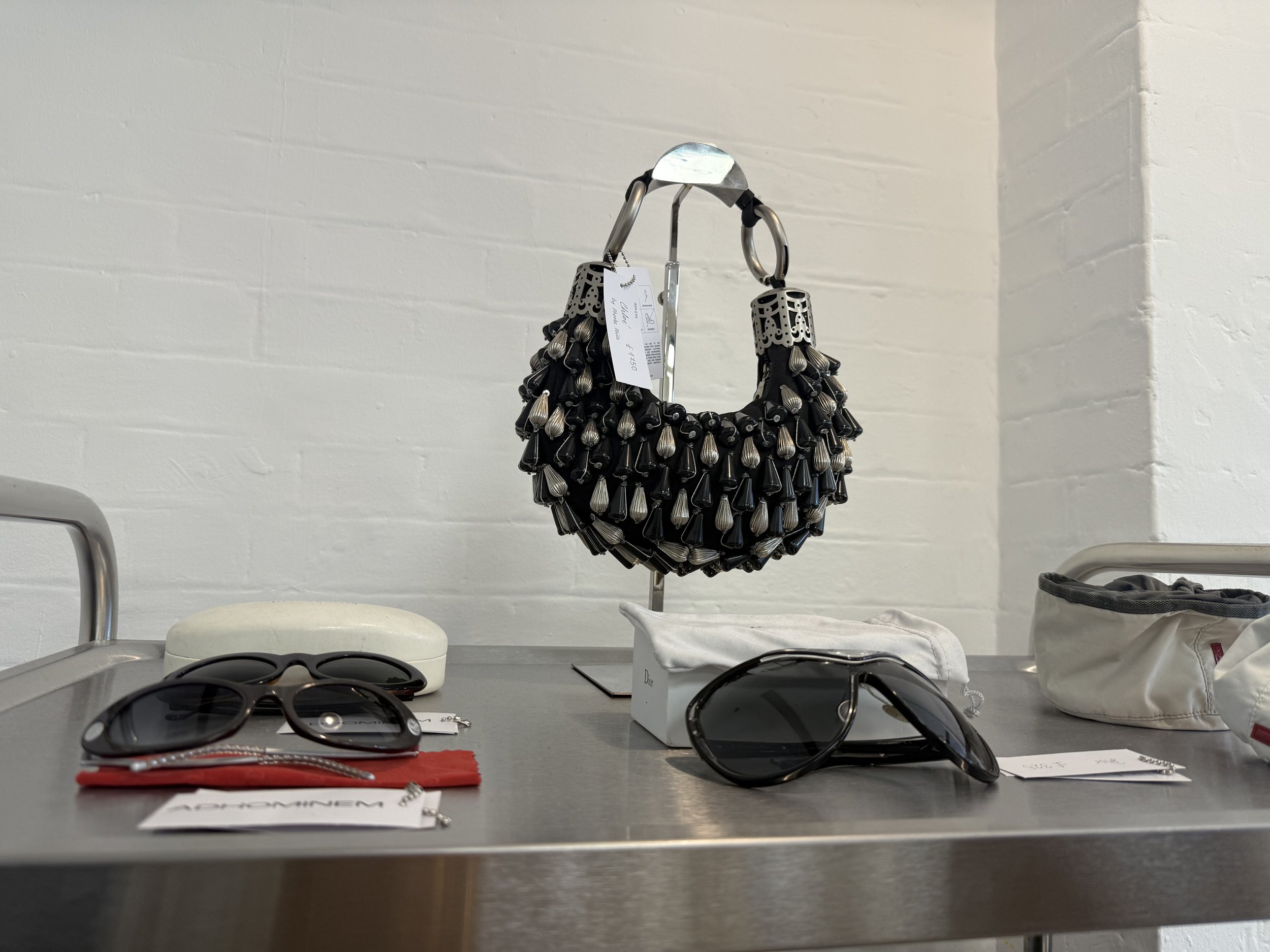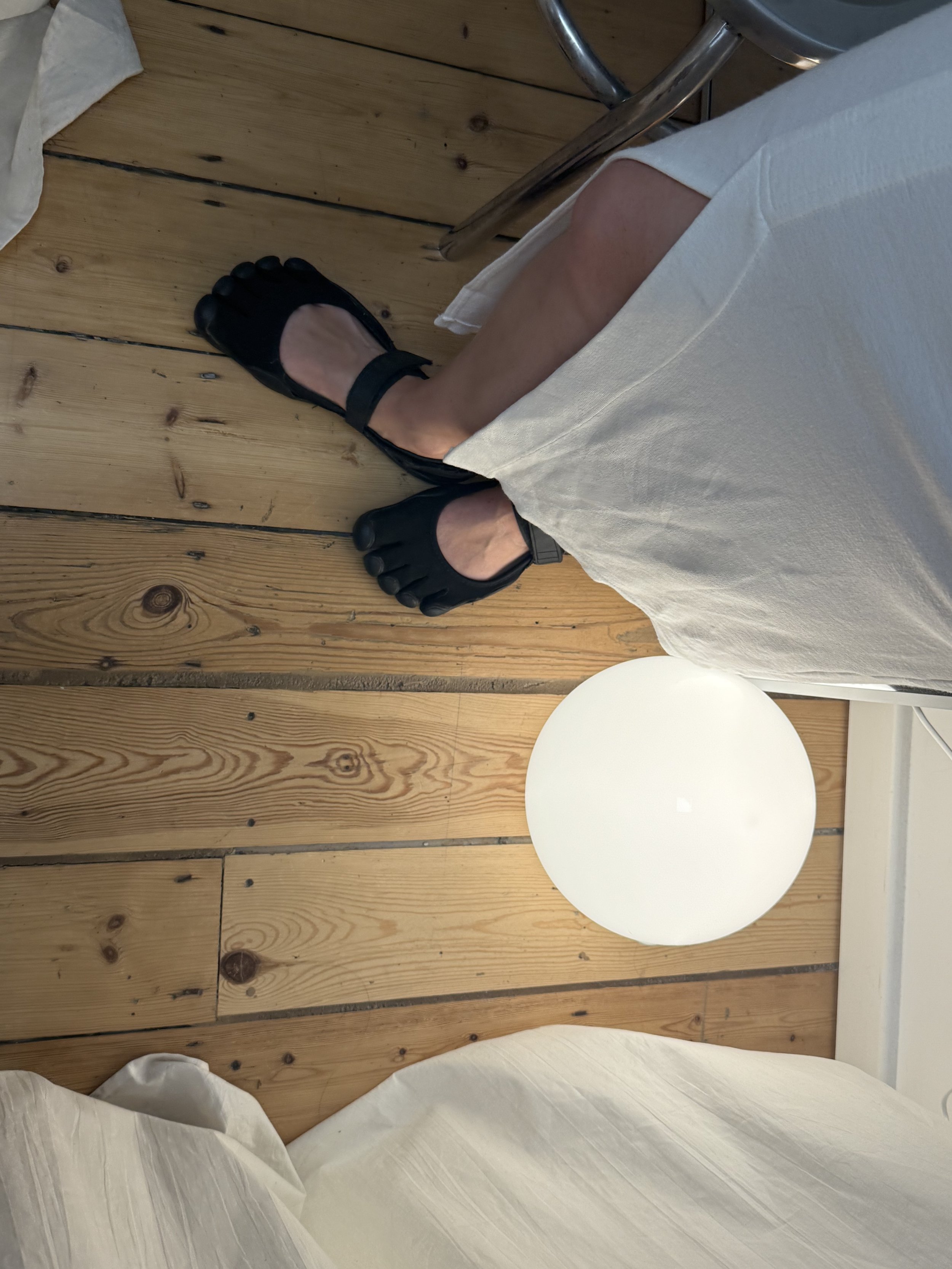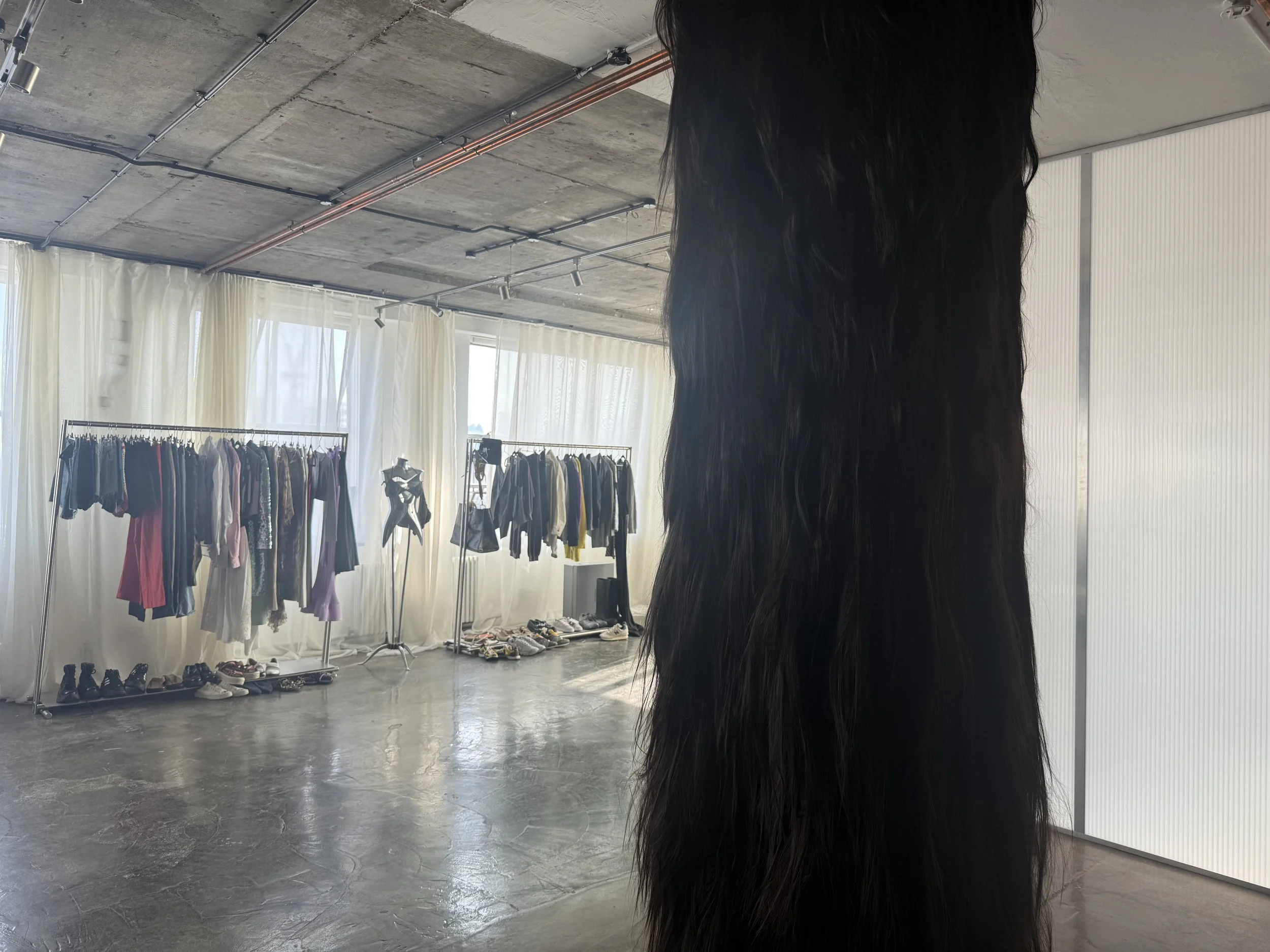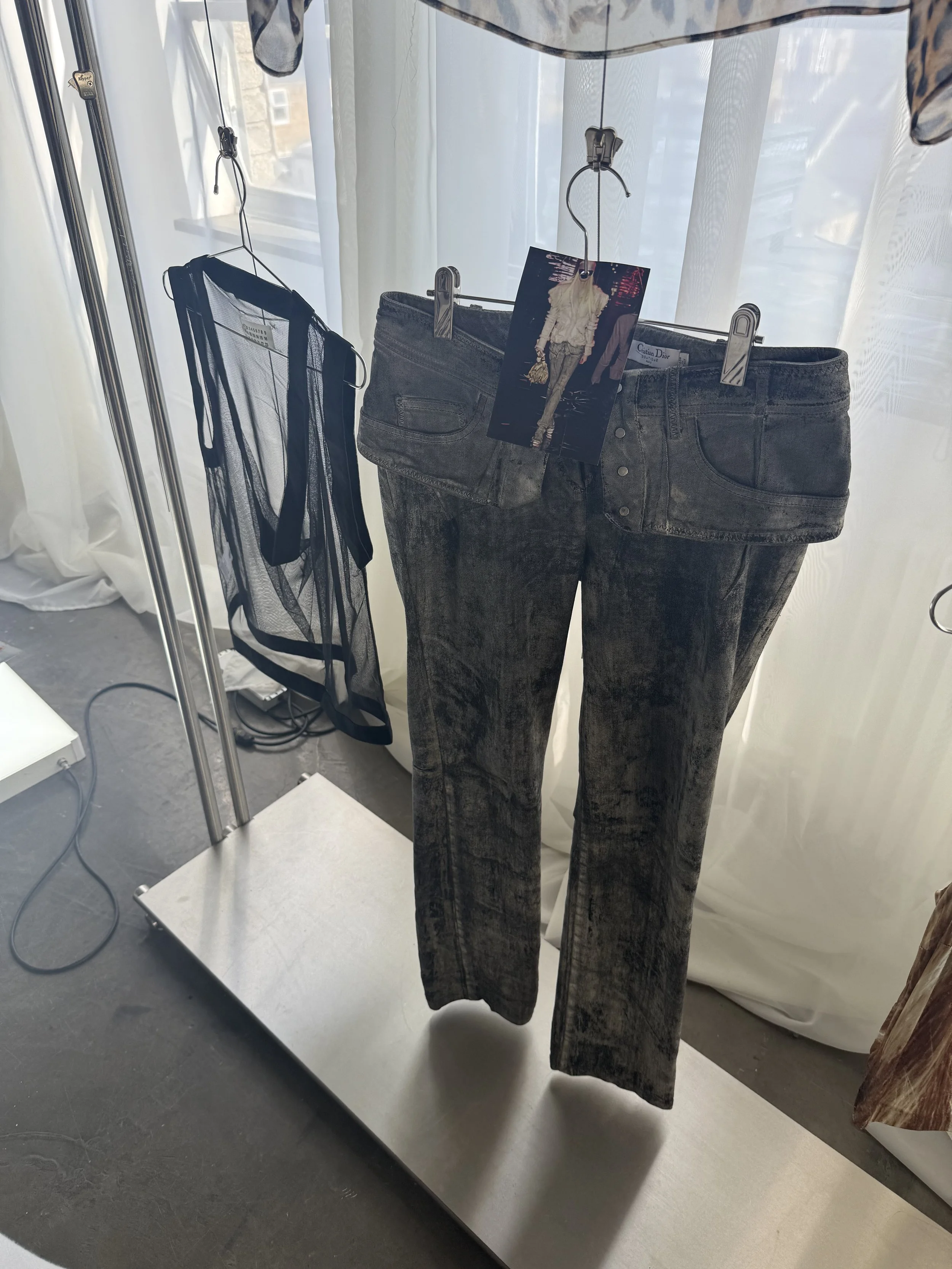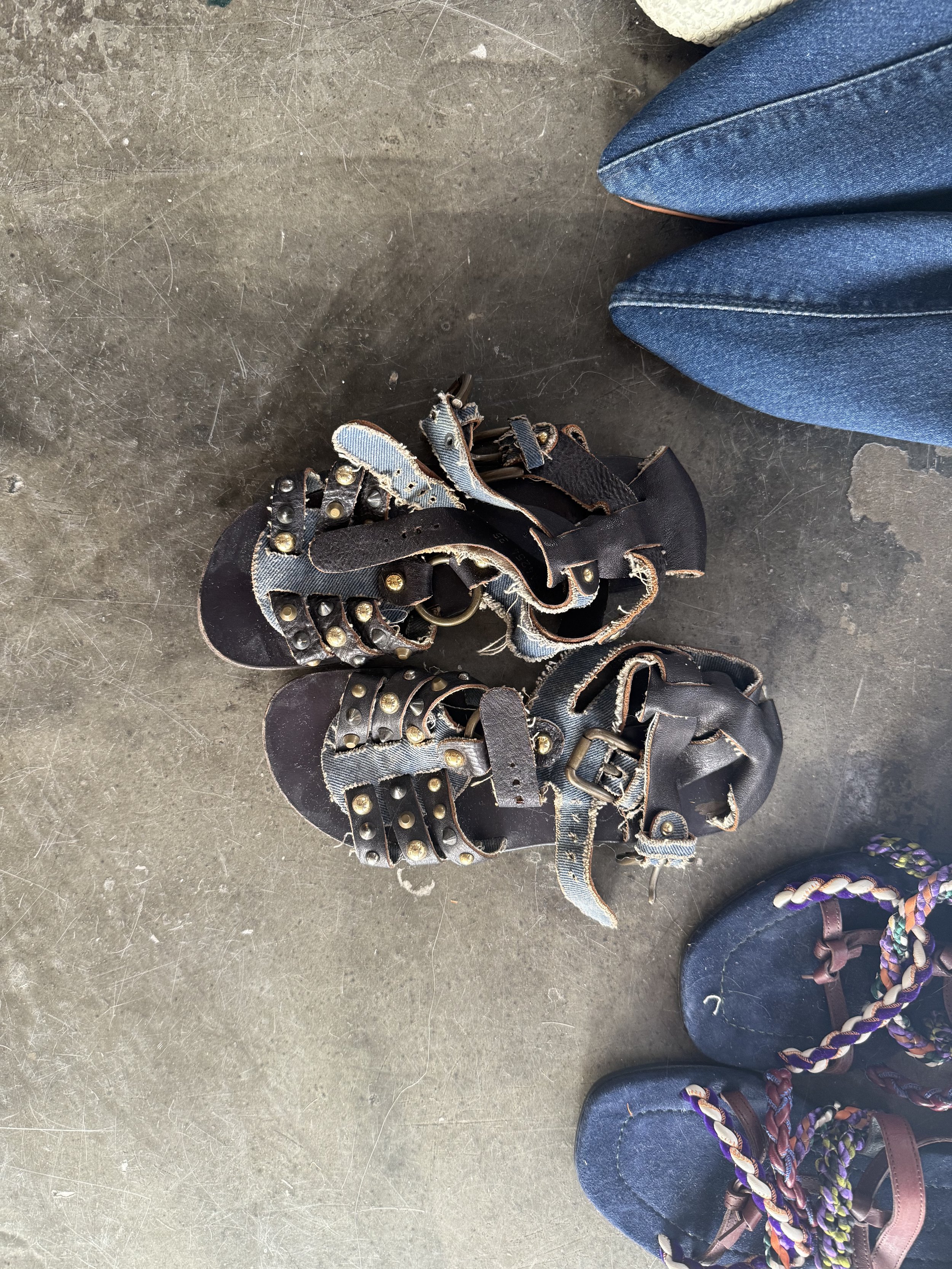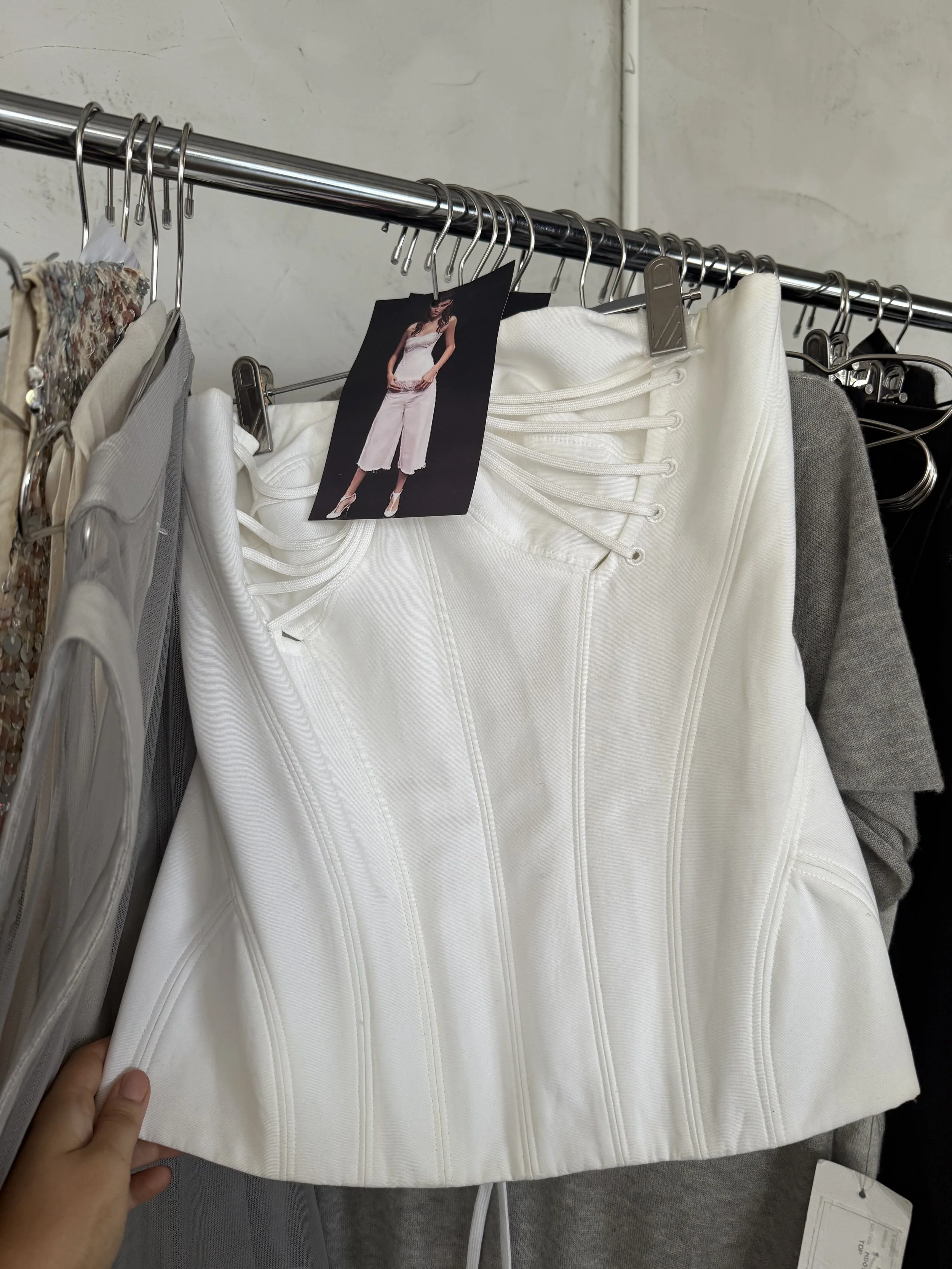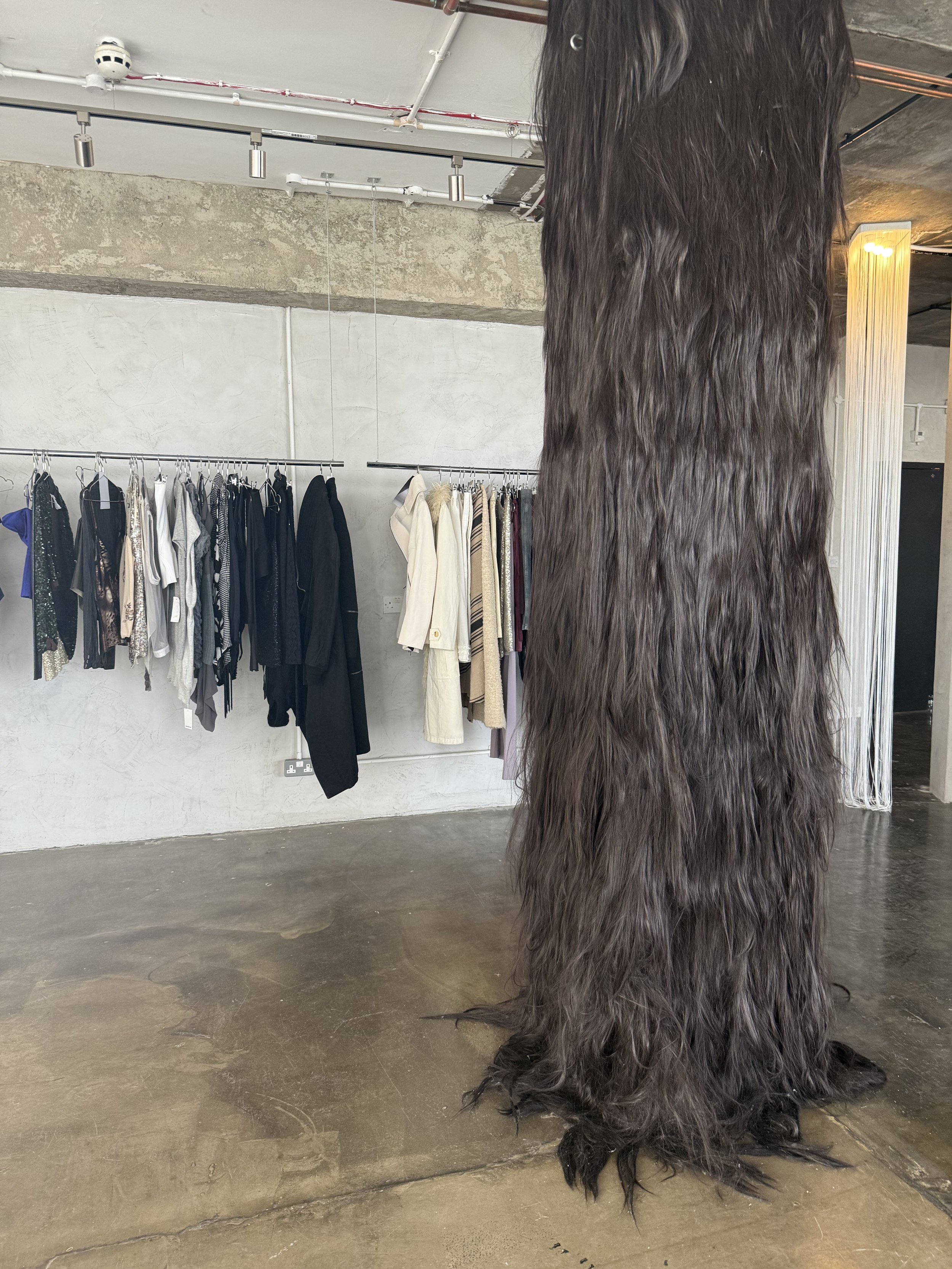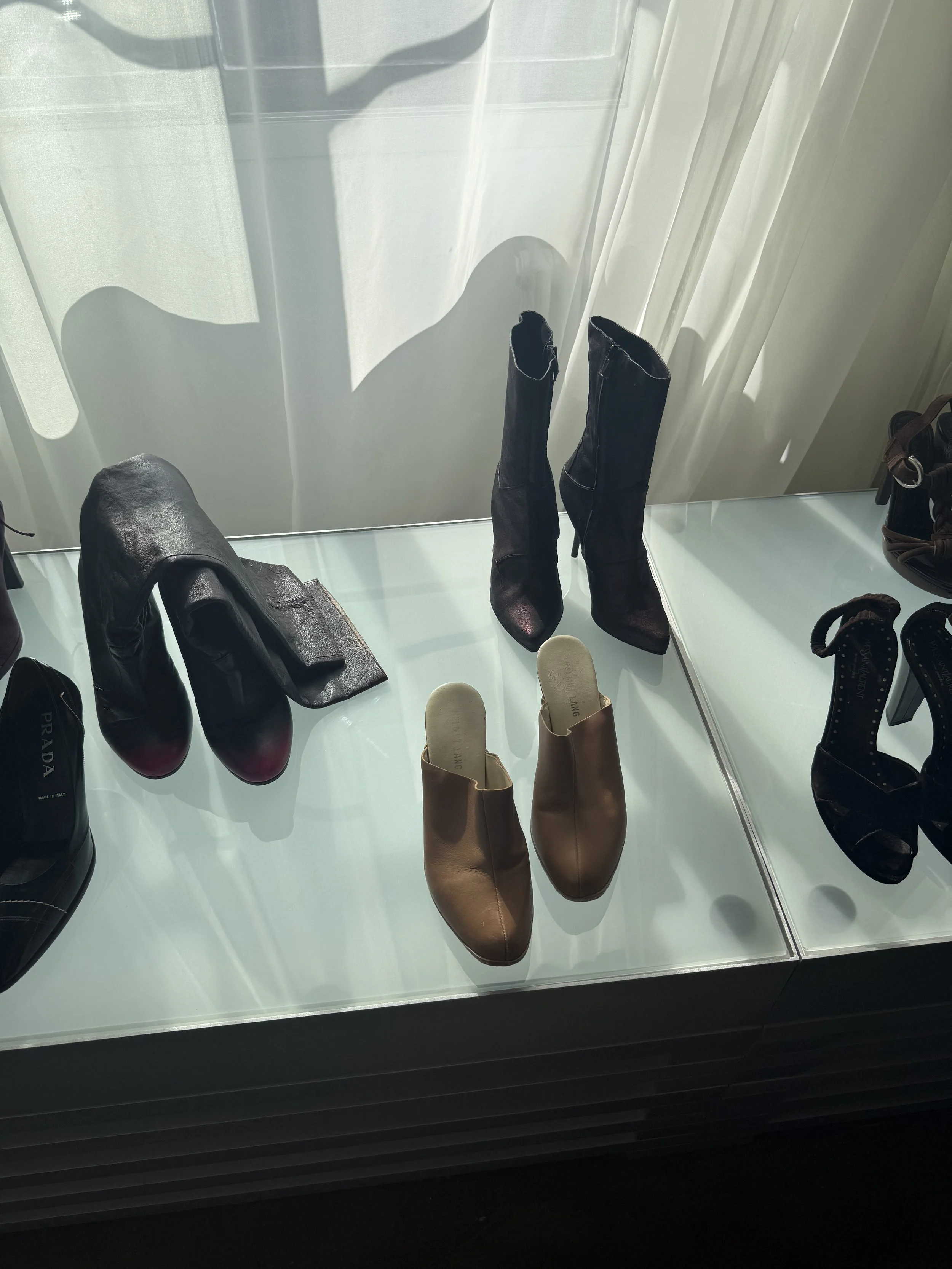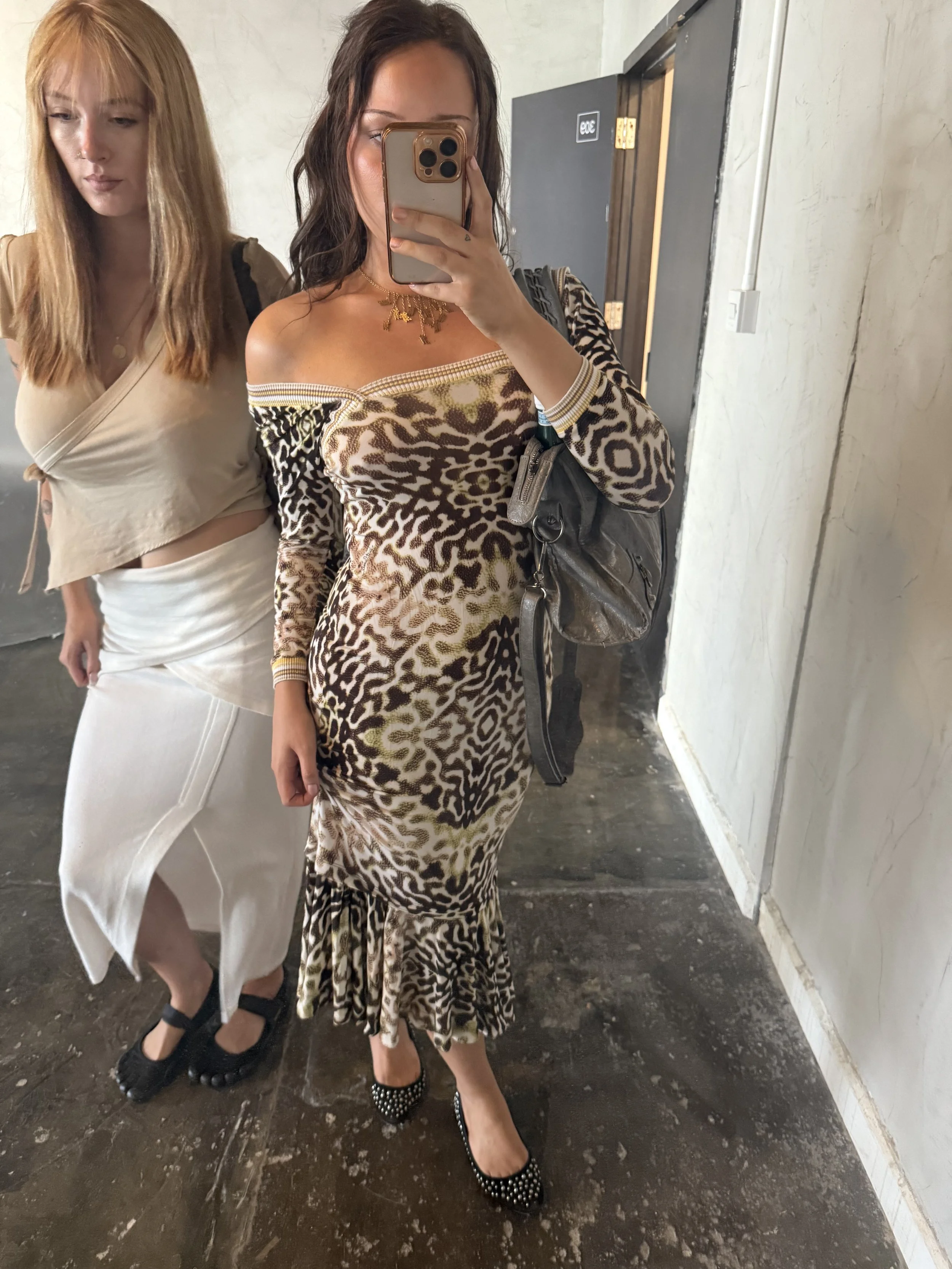Behind Closed Doors
Intimacy and Openness, Theatre and Tactility, Exclusivity and Connection in London’s Showrooms.
A selection of shoes as displayed in Baraboux.
After the first breakup of my twenties, asking my fashion-cousin and good friend Jodi to spend a day exploring the varying showrooms of London was an inevitable symptom and cure to such ‘heartbreak’ and certain disorientation.
I found myself craving an escape, a space where the noise of life could quiet, and my imagination could roam freely again. A necessary re-inspiration. For me, this has always been found in a beautifully curated showroom. There’s something almost therapeutic about immersing myself in rows of handpicked and lovingly sought-after garments, in textures and silhouettes that feel like worlds unto themselves. In times of crisis, I often turn to shopping. And not just mindless scrolling online, but the tactile, immersive act of exploring, feeling, and discovering pieces that spark new ideas. Perhaps not a traditional fight or flight response but I never said I wasn’t indulgent...
Showrooms have long been my refuge, a place to reignite inspiration when the world outside feels particularly grey or unfeeling. And I know I’m not the only one.
In recent years, showrooms have moved from niche industry spaces into cultural touch points where commerce, storytelling, and community overlap. No longer just backroom destinations for buyers, they’ve evolved into curated environments that invite customers to slow down, connect with the garments, and experience brands in a way that really helps you recognise fashion as an art form. I like to think of them akin to a gallery.
A study by LS:N Global revealed that #archivefashion hashtags on platforms like TikTok saw a staggering 36 million views even in July 2023, with 91% of viewers aged 18-24. And since then, it’s safe to say this cultural fixation has even grown with showrooms popping up here, there, everywhere. But what’s driving this renewed interest in the physical showroom in an age of hyper-fast e-commerce? Is it the tactility of touching a garment that a screen can’t replicate, the thrill of discovering archive pieces up close, or the theatre of spaces designed to inspire?
My own wander through London’s Adhominem, 100percerti, and Baraboux showrooms sought to answer exactly that - through fine knits, hair-covered pillars, an abundance of incredible fashion pulls, and unexpected doors left ajar.
Adhominem: Archived Futurism in the Heart of London’s Vintage Scene
There are vintage stores, and then there are vintage experiences - and Adhominem firmly belongs to the latter. Adhominem is ‘an ode to the pleasure of playing with shapes and layers through clothing’. Curated pieces are re-imagined: items shed their original context and are reborn with a contemporary aesthetic evoking a sense of vintage futurism as much as today’s Paris and Tokyo street style, so says Adhominem’s website.
My top picks indeed felt like keepsakes from Adhominem’s alternate timeline: a Cora Kemperman convertible jumpsuit that draped like soft origami and could be refashioned into drop-waist harem pants; the most buttery, delicate knit-and-mesh overlays from Cop Copine and Sarah Pacini, whisper-light yet sculptural; and a gleaming hardware-heavy Chloé bag from Phoebe Philo’s era, the kind of piece that feels both armour and ornament, ready to turn an outfit into a statement.
What makes Adhominem truly special, beyond the edit, is the tactility of the showroom experience. Feeling the silk slide through your fingers, weighing a knit in your hands, or exploring the contours of a bag up close reveals textures, weight, and craftsmanship that no photograph or screen can convey. It’s a space that invites touch, encourages curiosity, and makes discovery a physical and intriguing experience.
The showroom itself is an exercise in restraint with polished wooden floors, racks arranged for conversation rather than competition. You’re not just shopping; you’re engaging in a dialogue with design history. Adhominem’s romanticism comes through in the textures: silk that falls like water, soft knits that drape effortlessly, leather with a patina that tells its own story. Its futurism is in the silhouettes; architectural, transformative pieces that refuse to stay anchored in the decade they were born.
Each piece I gravitated toward felt like it carried a quiet story - garments as time travellers, crossing seasons and eras, waiting for the right wearer to carry them forward. In that way, Adoheimen doesn’t just sell vintage; it curates possibility.
It’s rare to find a vintage showroom that feels this cohesive. At Adhominem, every piece contributes to a narrative of beauty that’s timeless, experimental, and entirely unafraid.
100 PerCerti: An accidental stumbling into a Prada and Miu Miu treasure trove
If Adhominem felt like stepping into a curated dialogue between past and present, 100percerti was more like being gently ushered into someone else’s private reverie. Some discoveries feel fated. On our way to Baraboux, we ducked into a discreet doorway with no sign, no hint of what lay inside and suddenly we were in a walk-in wardrobe of dreams for any Prada or Miu Miu devotee.
The racks were quietly miraculous: silk slip dresses that shimmered under the soft lighting, sharply tailored coats that could transform any outfit into a statement, clever knits from Miu Miu, and shoes and bags spanning decades of Prada’s imagination. Among my top picks were a nude ruffle skirt from Miu Miu, a trio of Prada fur boots, and a matching Prada coat-and-skirt set in khaki green mesh with eyelet detailing - a piece so intimate and fragile it is carefully considered as a sacred part of the owner’s personal archive. It was intimate, unpretentious, and deeply personal... more like being invited to discover a friend’s collection or hobby, than browsing a public showroom. Here, exclusivity didn’t feel like a barrier; it felt like trust.
The space encouraged you to slow down, to touch, explore, and linger. You could run your hands along the hangers, discover something astonishing tucked between pieces, and feel genuinely present in the collection. There’s a peculiar joy in that unhurried attention. Unlike the curated theatricality of some showrooms, 100percerti had the warmth of familiarity: it was quiet but never cold, private but never intimidating. Every piece felt like it had a story, every corner invited curiosity, and every rack seemed to whisper that the best treasures aren’t shouted about - they are quietly waiting for someone who notices.
What made the experience remarkable wasn’t just the brands or the rarity of the garments; it was the feeling of being allowed in, of being trusted with these pieces, of having time to immerse yourself without pressure. 100percerti reminded me that the allure of showrooms isn’t in their exclusivity, but in the intimacy they cultivate, the chance to connect with the clothes in a way that’s unhurried, tactile, and profoundly human.
This unplanned stop became one of the day’s most memorable moments, proof that in London, the best vintage finds often wait quietly, tucked behind discreet doors, ready to be stumbled upon.
Baraboux: Where Archive Fashion Meets Theatrical Surrealism
If Adhominem whispers and 100percerti invites you in, Baraboux roars. The moment you step inside, you’re confronted by a sight so wonderfully absurd it borders on installation art: a towering showroom pillar covered floor to ceiling in brown synthetic hair. Part surreal sculpture, part statement piece, it instantly sets the tone - here, fashion isn’t just displayed; it performs.
The space unfolds in layers, each corner revealing a new act from fashion’s most decadent decades. Draped curtains frame sections like stage sets, while the shoes alone could fill a museum cabinet: Helmut Lang wedges sculpted for a dystopian runway, sleek Prada boots with just the right patina, and heels that seem to exist purely for the sake of drama. Baraboux doesn’t just sell clothing but is home to known legends. Every hanger feels like an archival reveal: Christian Dior leather trousers that feel impossibly current, a Jean Paul Gaultier tribal-pattern dress radiating late-90s energy, and pieces that make you stop mid-step just to take in their details.
Adding to the magic is the team of three (or was it four?) girls tucked behind a central desk, heads bent over laptops, whispering as they sourced and discussed new finds. Their quiet focus feels like part of the showroom’s choreography, acting as a subtle reminder that each piece has been hunted, curated, and chosen with intention. Watching them work gave a sense of the hidden networks and careful attention that make a showroom like Baraboux feel so alive.
The changing room is another spectacle entirely. Designed as a small art installation, it is a shrine to discovery: mirrors, textures, and soft light transform every garment try-on into a private performance. And yet, the queue is endless with a small gaggle of customers clutching treasured finds at any one time, waiting patiently upon a mound of cushions, sheepskins and vintage magazines as the space becomes a communal experience. Here, fashion feels sacred and shared at once, a tactile, slow-motion contrast to scrolling through an online store.
Unlike the gentle trust of 100percerti or the refined futurism of Adhominem, Baraboux thrives on theatricality and immersive energy. Every square metre is a love letter to the bold, the strange, and the beautiful - a space where the imagination can run free, unlike the gentle intimacy of 100percerti or the contemplative curation of Adhominem.
In Reflection…
As the day unfolded across Adhominem, Baraboux, and 100percerti, it became clear that each showroom offered a unique kind of refuge and revelation. Adhominem’s romantic futurism gently encouraged reflection and exploration, with convertible jumpsuits, buttery slip dresses, and layered knits that reminded me why the tactile experience of fashion is irreplaceable. It was a space where archive pieces are reborn with contemporary life, where textures, shapes, and layers invite slow, contemplative engagement.
100percerti, by contrast, offered intimacy and exclusivity, a private dialogue with Prada and Miu Miu treasures: nude ruffle skirts from SS99, a trio of fur boots, and a khaki-green mesh coat-and-skirt set sacred to the owner’s personal archive. Here, fashion felt personal, almost secretive, a gentle counterpoint to the theatricality of Baraboux where hair-covered pillars, surreal installations, and a team quietly sourcing treasures created a sensory playground for the audacious and the curious. The changing room alone was an act of communal reverence, a space where each customer’s discovery became part of a shared, immersive narrative.
Taken together, these showrooms illustrate why the physical space remains vital in an era dominated by digital consumption. It’s the tactility, the thrill of encountering garments in three dimensions, the dialogue between past and present, that cannot be replicated online. And on a personal level, it’s the way these spaces soothe and inspire, a kind of creative therapy that restores imagination and energy when life feels disorienting.
London’s showrooms are not just places to buy; they are stages for storytelling, archives for inspiration, and havens for curiosity.
They remind us that fashion, at its best, is both a deeply personal encounter and a communal experience. They remind us that in the quiet corners of curated spaces, amidst textures, layers, and history, one can always rediscover joy, possibility, and a sense of self.



